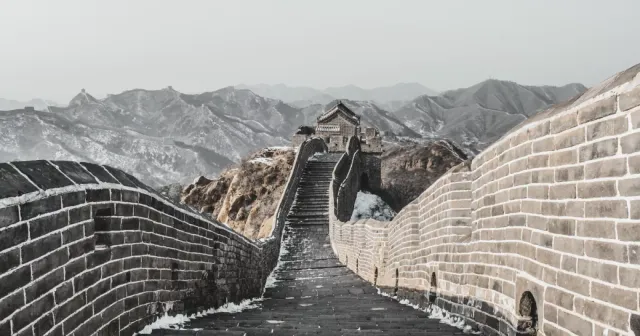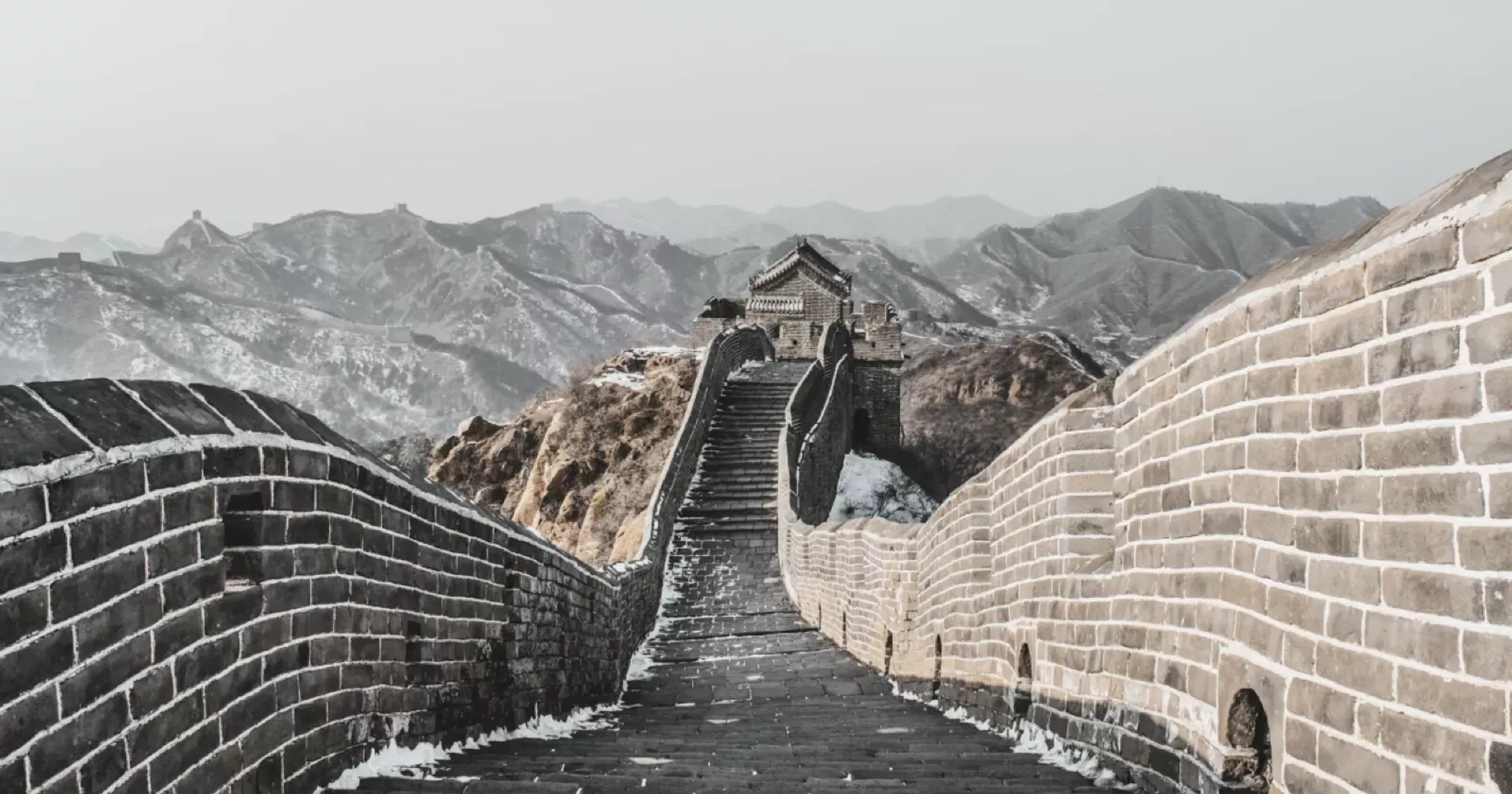Khwarezmian Empire (simplified: 花剌子模国, traditional: 花剌子模國, pinyin: Huālàzǐmó Guó, jyutping: faa1 laat6 zi2 mou4 gwok3)
The Khwarezmian Empire (simplified: 花剌子模国, traditional: 花剌子模國, pinyin: Huālàzǐmó Guó, jyutping: faa1 laat6 zi2 mou4 gwok3) was a powerful Central Asian empire that served as the primary target of Genghis Khan’s western campaign in The Legend of the Condor Heroes. The empire’s conquest provided the backdrop for Guo Jing’s military genius to flourish and marked a pivotal moment in demonstrating the Mongol Empire’s expansion beyond traditional nomadic territories.
Located in the heart of Central Asia, the Khwarezmian Empire controlled crucial trade routes and defended ancient cities like Samarkand, making it a significant obstacle to Mongol expansion westward. The empire’s sophisticated urban defenses and diverse military forces provided formidable challenges that tested both Mongol tactics and the strategic innovations that Guo Jing brought to the campaign.
The empire’s fall represented more than mere territorial conquest—it demonstrated how traditional Central Asian powers succumbed to the Mongol military revolution, while simultaneously showcasing how Chinese strategic principles could enhance Mongol effectiveness when properly integrated by leaders like Guo Jing.
Geography and territories
Core regions
The Khwarezmian Empire controlled vast territories spanning the heart of Central Asia:
Primary Territories:
- Khwarezm: The empire’s historical homeland around the Amu Darya delta
- Transoxiana: Rich agricultural regions between the Amu Darya and Syr Darya rivers
- Persian territories: Western provinces extending toward the Caspian Sea
- Northern Afghanistan: Mountain regions controlling trade route access
Strategic Cities:
- Samarkand: The empire’s greatest fortress city and commercial center
- Bukhara: Major religious and cultural center
- Merv: Important trading hub and administrative center
- Herat: Strategic mountain fortress controlling Afghan routes
Defensive advantages
The empire’s geographical position provided significant military advantages that made it a formidable opponent for any invading force:
Natural Barriers:
- Desert borders: Extensive desert regions that hindered large army movements
- River systems: The Amu Darya and Syr Darya provided defensive lines
- Mountain passes: Controlled access routes through the Hindu Kush and Pamir ranges
- Urban fortifications: Heavily fortified cities designed to withstand siege warfare
These geographical factors explained why Genghis Khan’s conquest of the empire required innovative tactics and why Guo Jing’s strategic contributions proved so valuable in overcoming traditional siege challenges.
Political structure and governance
Imperial administration
The Khwarezmian Empire operated under a sophisticated system that balanced Central Asian traditions with Islamic governance:
Central Authority:
- Shah: Supreme ruler with absolute power over military and civil affairs
- Vizier: Chief administrative officer overseeing daily governance
- Provincial governors: Regional administrators managing local territories
- Military commanders: Professional officers leading standing armies
Administrative System:
- Urban governance: City-based administration for major commercial centers
- Tribal coordination: Integration of nomadic groups within imperial structure
- Religious authority: Islamic legal system governing civil and criminal matters
- Trade regulation: Commercial laws protecting caravan routes and merchant activities
Military organisation
The empire maintained a complex military system that combined various fighting traditions:
Professional Forces:
- Standing armies: Trained soldiers stationed in major fortresses
- Elite guards: Personal troops protecting the Shah and major cities
- Siege specialists: Engineers skilled in fortress defense and construction
- Cavalry units: Mobile forces capable of rapid deployment
Auxiliary Forces:
- Tribal levies: Nomadic warriors called up during major campaigns
- Urban militias: Citizen soldiers defending their home cities
- Foreign mercenaries: Professional soldiers from various cultural backgrounds
- Allied contingents: Forces provided by vassal states and client kingdoms
Role in the western campaign
Strategic importance
The Khwarezmian Empire represented the most significant challenge to Mongol westward expansion during the period covered in The Legend of the Condor Heroes. Its conquest was essential for establishing Mongol dominance over Central Asian trade routes and demonstrating imperial power to other potential adversaries.
The empire’s resistance required the Mongols to develop new approaches to siege warfare and urban conquest, moving beyond their traditional strengths in mobile cavalry warfare to master more complex military challenges.
Guo Jing’s innovations
During the western campaign, Guo Jing served as Right Wing Marshal and demonstrated his military genius through innovations that proved crucial in overcoming Khwarezmian defenses:
Strategic Contributions:
- Siege techniques: Adaptation of Chinese military engineering for Mongol use
- Combined tactics: Integration of Chinese strategic thinking with Mongol mobility
- Intelligence operations: Use of advanced reconnaissance and planning methods
- Logistics coordination: Improved supply and communication systems
His approach puzzled Khwarezmian commanders who had prepared for traditional Mongol tactics but found themselves facing unprecedented military innovations that combined the best elements of Chinese and Mongol military traditions.
The siege of Samarkand
The climactic siege of Samarkand represented the empire’s final major resistance and showcased the full extent of Guo Jing’s military capabilities:
Siege Innovations:
- Engineering advances: New approaches to fortress reduction that accelerated traditional siege timelines
- Coordination tactics: Seamless integration of multiple attack vectors
- Psychological warfare: Strategic use of deception and misdirection
- Urban conquest: Techniques for controlling conquered cities while minimizing destruction
The successful capture of Samarkand, achieved through Guo Jing’s strategic brilliance and Huang Rong’s clandestine assistance, effectively ended organized Khwarezmian resistance and established the Mongol Empire’s dominance over Central Asia.
Cultural and economic significance
Commercial importance
The Khwarezmian Empire controlled crucial segments of the Silk Road trade networks that connected East and West:
Trade Networks:
- Chinese routes: Connections to Song and Jin territories through the Western Regions
- European access: Links to Byzantine and European markets
- Indian connections: Routes through Afghanistan to the Indian subcontinent
- Islamic world: Integration with broader Islamic commercial networks
The empire’s conquest by the Mongols disrupted these traditional trade patterns while simultaneously opening new possibilities for expanded commercial integration under imperial protection.
Cultural diversity
The empire’s territories encompassed remarkable cultural diversity that influenced both martial arts development and political organisation:
Cultural Groups:
- Persian populations: Sophisticated urban civilizations with advanced administrative systems
- Turkic tribes: Nomadic and semi-nomadic groups contributing military expertise
- Arab communities: Islamic religious and commercial centers
- Local minorities: Various ethnic groups with specialized skills and knowledge
This diversity provided the empire with resilience and adaptability but also created internal tensions that the Mongol invasion exploited.
Decline and conquest
Mongol invasion
The Mongol conquest of the Khwarezmian Empire unfolded through a systematic campaign that demonstrated both Mongol military evolution and the effectiveness of Guo Jing’s strategic contributions:
Campaign Phases:
- Initial penetration: Mongol forces entering imperial territory through coordinated attacks
- City reduction: Systematic conquest of major fortress cities
- Imperial collapse: Breakdown of central authority and organized resistance
- Territory integration: Incorporation of conquered regions into the Mongol Empire
The campaign’s success established patterns for later Mongol conquests while validating the effectiveness of combining traditional Mongol strengths with Chinese strategic innovations.
Legacy and transformation
The empire’s conquest marked a fundamental transformation in Central Asian political organisation:
Political Changes:
- Mongol administration: Replacement of Islamic governance with imperial systems
- Military reorganisation: Integration of Khwarezmian military expertise into Mongol forces
- Commercial restructuring: Redirection of trade routes under Mongol protection
- Cultural adaptation: Synthesis of local traditions with Mongol imperial culture
These changes created the foundation for the Mongol Empire’s continued expansion westward while demonstrating how conquest could lead to cultural synthesis rather than simple destruction.
Behind the scenes
The Khwarezmian Empire in Jin Yong’s The Legend of the Condor Heroes represents the author’s exploration of how great powers adapt to existential challenges and how individual innovation can influence historical outcomes. The empire’s portrayal provides context for understanding both Mongol military effectiveness and the strategic principles that enabled such rapid expansion.
Historical foundation
The Khwarezmian Empire was an authentic historical entity that ruled large parts of Central Asia and Iran from approximately 1077 to 1231 CE. The empire was founded by Turkic mamluks who had served as governors under the Seljuq Sultans but gradually achieved independence and expanded their territories significantly.
The historical Shah Ala ad-Din Muhammad II (1200-1220) ruled during the empire’s greatest extent, controlling territories from the Caspian Sea to the Persian Gulf and from the Caucasus to the Hindu Kush mountains. The empire’s capital rotated between various cities, with Samarkand serving as one of its most important centers.
The Mongol invasion
The historical Mongol invasion of the Khwarezmian Empire (1219-1221) was one of the most devastating military campaigns in medieval history. Genghis Khan initially sought diplomatic and trade relations with the Khwarezmians, but the execution of Mongol ambassadors and the massacre of a Mongol caravan led to the declaration of total war.
The Mongol campaign was notable for its systematic destruction of urban centers and the near-complete elimination of the empire’s population in many regions. Cities like Samarkand, Bukhara, and Merv were destroyed with unprecedented thoroughness, leading to demographic collapse across much of Central Asia.
The last Khwarezmian ruler, Jalal ad-Din Mingburnu, continued resistance against the Mongols but was ultimately defeated and forced into exile. His attempts to rebuild the empire failed, and he was eventually assassinated, marking the definitive end of Khwarezmian power.
Jin Yong’s adaptation
Jin Yong’s portrayal focuses on the military and strategic aspects of the conquest rather than its devastating humanitarian consequences. The author uses the historical campaign as a backdrop for exploring themes of military innovation, cultural adaptation, and the role of individual genius in shaping historical outcomes.
The emphasis on Guo Jing’s contributions to the siege of Samarkand reflects Jin Yong’s interest in how Chinese strategic traditions could enhance Mongol military effectiveness. While historically the Mongols developed their own siege techniques, Jin Yong’s fictional integration of Chinese military knowledge provides a narrative framework for exploring cultural synthesis and intellectual cross-fertilization.
The empire’s portrayal as a sophisticated adversary worthy of respect demonstrates Jin Yong’s nuanced approach to depicting conquest and resistance. Rather than presenting simple victory narratives, the author shows how great civilizations could fall while still contributing to the development of their conquerors.
Literary significance
The Khwarezmian Empire serves multiple narrative functions within The Legend of the Condor Heroes. It provides a testing ground for Guo Jing’s military development, demonstrates the global scope of Mongol power, and illustrates how individual innovation can influence major historical events.
The empire’s sophisticated defenses and cultural complexity also provide contrast to the simpler political structures of the Chinese martial arts world, showing how the jianghu exists within larger patterns of political and military development.
See also
External links
- Khwarezmian Empire on Wikipedia
- Khwarezmian Empire on Chinese Wikipedia (Chinese)
- Khwarezmian Empire on Britannica

